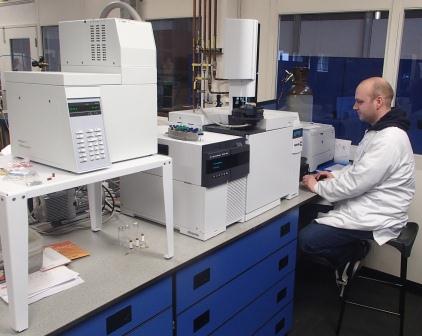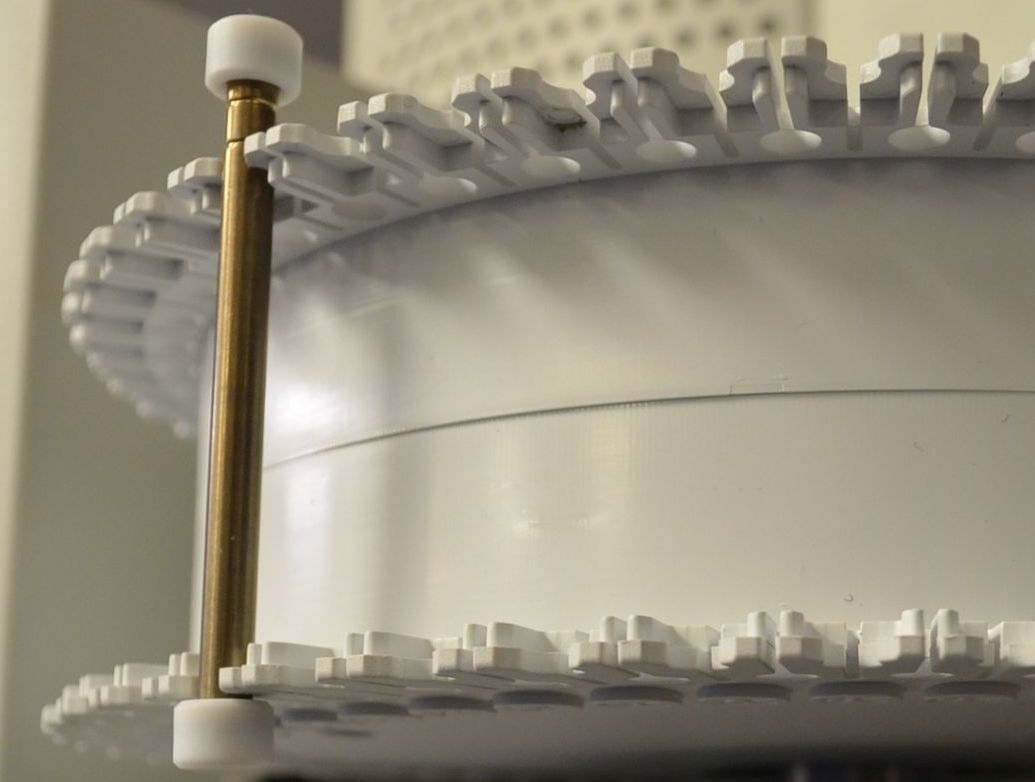Gas Chromatography - Mass Spectrometry GC-MS Analysis
 GC-MS (Gas Chromatography Mass Spectrometry) is suited for chemical fingerprint identification of organic molecular species specifically volatile or semi-volatile compounds, but can be used to look at bulk plastics and rubbers with the correct sample preparation such as Pyrolysis GC-MS. It can be used for single compounds, for splitting complex mixtures or evaluation of degradation products. Even solid plastics can be analysed using remnant lower molecular species such as remnant monomers or low molecular weight species as markers such as stabilisers, catalysts or plasticisers.
GC-MS (Gas Chromatography Mass Spectrometry) is suited for chemical fingerprint identification of organic molecular species specifically volatile or semi-volatile compounds, but can be used to look at bulk plastics and rubbers with the correct sample preparation such as Pyrolysis GC-MS. It can be used for single compounds, for splitting complex mixtures or evaluation of degradation products. Even solid plastics can be analysed using remnant lower molecular species such as remnant monomers or low molecular weight species as markers such as stabilisers, catalysts or plasticisers.
Tailored solvent chemical preparation techniques can be used to specifically extract characteristic organic species from liquid or solid samples or headspace sampling can be used for contaminated or unknown samples.
Pyrolysis GC-MS can be used to look at polymer backbones as well as additives and residual monomers from incomplete curing or incorrect mixing in 2-pack systems including adhesives.
The laboratory receives various samples for GC and GC-MS from different clients including organic compounds, polymers and rubbers as well as natural materials from pharmaceutical, medical devices, wound management, petrochemical, aerospace, chemicals, coatings and automotive industries.
Liquid GC-MS Typical Applications
- Identification of unknown organic species and contaminants.
- Analysis and quantification of mixed solvents and solvent waste streams.
- Deformulation of chemicals and chemical products.
- Polymer, paint coating and rubber failure investigations.
- Identication of organic contaminants or residual species coupled with FTIR and SEM / EDX or surface analysis techniques like XPS and SIMS.
- Paint, adhesive, sealant and gasket fingerprinting.
- Qualitative and quantitative analysis of e-cigarette nicotine preparations and trace level contaminants.
- Identification of residual cleaning or degreasing agent stains from poor cleaning or rinsing coupled with XPS and FTIR.
- Analysis of oils and petrochemicals.
- Characterisation of antimicrobial coatings.
Headspace GC-MS Typical Applications
- Analysis of real world dirty samples.
- Analysis of polymers and rubbers, volatile compounds and solvents, mobile species, plasticisers, stabilisers and low molecular weight species.
- Finished plastic products for assessment of extent of curing, mould release agents, plasticisers, stabilisers or other additives.
- Identification of residual solvents from packaging.
- Analysis of environmental volatiles in water.
- Analysing sources of odour in solid and liquid samples such as characterisation and quantification of aroma components for food and beverages (e.g. Coffee, wine etc.)
- Diagnostic gas analysis from oils.
- Identification of accelerants in fire damage residues or debris.
Overview of the GC-MS Instrument and Capabilities
The laboratory's Agilent GC-MS instrument is used in technical problem solving activities and for other general chemical measurement requirements. GC-MS is used for the analysis of volatile and semi-volatile compounds and is coupled to an extensive commercial NIST (National Institute of Standards and Technology) database using the Mass Hunter data analysis work flow software that it is able to search for and identify analytes in mixtures over a wide mass range simultaneously. It is cabable of qualitative and quantitative analysis being able to detect analytes to ppb limits of detection and beyond using SIM (single ion monitoring) with high precision and reproducability.
The Agilent 5977E Series GC/MSD System comprises of: -
- 7820A Gas Chromatograph (GC) with split / splitless inlet, splitless liner.
- 7693A ALS G4513A Liquid injector with 16 vial capacity, plus Wash (W) and A and B positions.
- 7694E G1883A Headspace (HS) Sampler with 12 vial capacity that can be heated to 200degC.
- 5977E Mass Selective Detector (MSD) with a 40-1050amu mass range.
- Perkin Elmer TurboMatrix 150 thermal desorber for measurements up to 400degC.
GC Columns are selected for a specific analysis to ensure that the chromatography is at its best and is reproducible in terms of peak shape, area and retention times. The column provides the species spearation and the mass sensitive detector provides the identication of the species as they emerge from the GC column.




